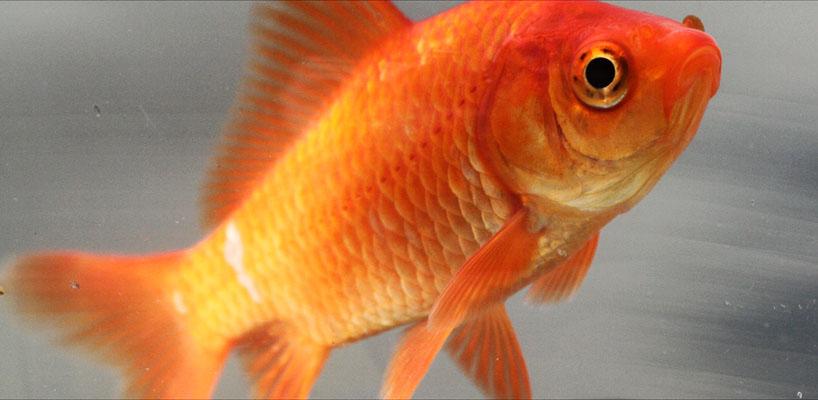- Goldfish are a popular type of freshwater fish often kept as pets in aquariums.
- They belong to the carp family and are descendants of a wild carp species known as Prussian carp.
- Goldfish have been selectively bred for centuries, resulting in a wide variety of colors, shapes, and sizes.
- They are native to East Asia and were first domesticated in ancient China over a thousand years ago.
- Goldfish have a lifespan of 10 to 15 years on average, although some have been known to live much longer.
- They are cold-water fish and can tolerate a wide range of temperatures, but they prefer temperatures between 65-75°F (18-24°C).
- Goldfish have a unique respiratory system that allows them to extract oxygen from both water and air.
- They have a specialized organ called a labyrinth, which enables them to breathe atmospheric oxygen.
- Goldfish are omnivorous, meaning they eat both plant matter and small organisms like insects and crustaceans.
- They have a keen sense of sight and can recognize their owners, often swimming towards them when approached.
- Goldfish have a lateral line system, which helps them detect movement and vibrations in the water.
- They are social animals and can recognize and interact with other goldfish, often forming shoals or groups.
- Goldfish are known for their ability to adapt to different environments, making them relatively easy to care for as pets.
- They are popular subjects of study in scientific research due to their ability to regenerate damaged tissue, including fins and scales.
- Goldfish have a good memory and can be trained to perform various tricks and behaviors.
- They have a unique digestive system, with a two-chambered stomach that allows them to process both plant matter and protein-based foods.
- Goldfish produce waste in the form of ammonia, which can be toxic to them if not properly filtered and managed in their aquariums.
- They are prolific breeders, with females laying hundreds or even thousands of eggs during spawning.
- Goldfish eggs hatch within a few days, and the fry (baby goldfish) grow rapidly with proper care and nutrition.
- They have a range of swimming patterns, including cruising, darting, and hovering in one place.
- Goldfish have been introduced to various parts of the world outside their native range, often becoming invasive species in certain habitats.
- They have a relatively small brain compared to their body size, but they exhibit behaviors that demonstrate learning and problem-solving abilities.
- Goldfish come in a variety of tail shapes, including the common single-tail, fantail, oranda, and butterfly tail.
- They have a natural instinct to forage and nibble on plants, rocks, and other objects in their environment.
- Goldfish are known for their resilience and ability to recover from various health issues, given proper care and water conditions.
- They have a special pigment called chromatophores in their skin, which can change their coloration in response to environmental factors and stress.
- Goldfish produce slime on their scales, which helps protect their skin from infection and reduces friction in the water.
- They have a unique ability to see ultraviolet light, which enables them to detect patterns and colors that are invisible to humans.
- Goldfish are known to exhibit a phenomenon called “carp diem,” where they become more active and playful in response to changes in environmental conditions.
- They have a sense of taste, and their taste buds are located not only in their mouth but also on their lips, fins, and even their throat.
- Goldfish have been bred for various characteristics, including long flowing fins, large round bodies, and vibrant colors.
- They are capable of recognizing different sounds and vibrations, responding to familiar voices or the sound of food being prepared.
- Goldfish have been depicted in art and cultural symbolism throughout history, representing luck, prosperity, and abundance.
- They have a remarkable ability to regenerate damaged tissue, including their fins, scales, and even parts of their brain.
- Goldfish can detect changes in light intensity, allowing them to adjust their behavior and hide from predators.
- They are sensitive to water conditions and require a well-maintained aquarium with appropriate filtration and regular water changes.
- Goldfish have a relatively low oxygen demand compared to other fish species, allowing them to thrive in oxygen-poor environments.
- They are known for their jumping ability and can leap out of the water if startled or in search of food.
- Goldfish have been recorded to grow to large sizes in certain conditions, with some specimens reaching lengths of over 12 inches (30 cm) or more.
- They have a unique ability to detect and respond to electromagnetic fields, which helps them navigate and find food in their environment.
- Goldfish are considered a symbol of good luck and prosperity in many cultures, particularly in Chinese and Japanese traditions.
- They have a strong sense of curiosity and are known to explore their surroundings by investigating objects and swimming through tunnels and obstacles.
- Goldfish have been featured in literature, art, and mythology, often symbolizing beauty, tranquility, and grace.
- They have a sophisticated color vision and can perceive a wide range of hues, allowing them to appreciate and respond to the vibrant colors in their environment.
- Goldfish have been bred to have various eye shapes, including telescopic eyes, which protrude from the sides of their head.
- They are diurnal animals, meaning they are most active during the day and tend to rest or sleep at night.
- Goldfish exhibit schooling behavior, particularly when they are young, swimming together in coordinated movements.
- They are known to exhibit a natural inclination for exploration, often investigating new objects or changes in their environment.
- Goldfish have been the subject of scientific research, particularly in the fields of genetics, behavior, and aquatic biology.
- They are fascinating creatures that have captivated humans for centuries, bringing joy and beauty to homes and aquariums around the world.
Facebook Comments

































